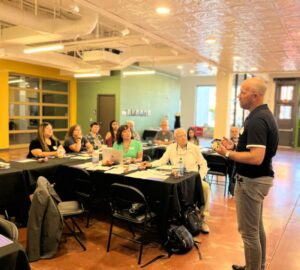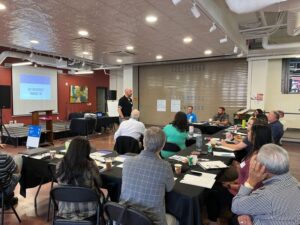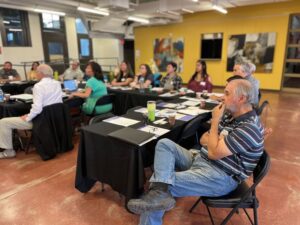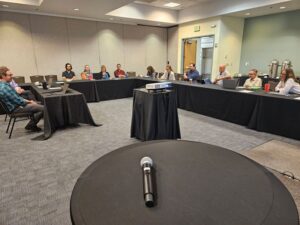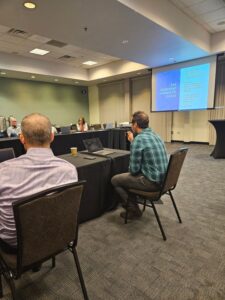2023 COLORADO TAX INCREMENT FINANCE 101 MID-TOUR SUMMARY
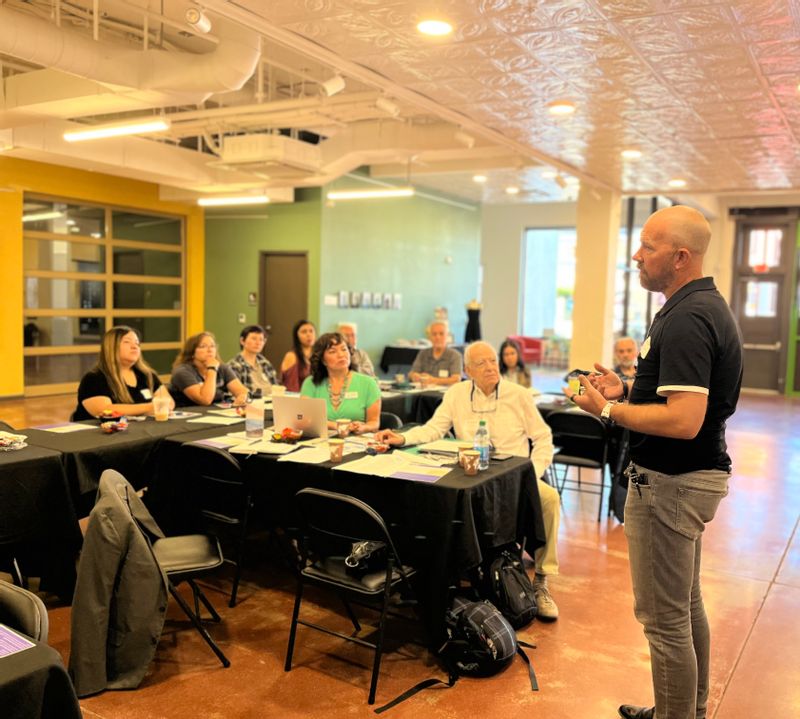
OVERVIEW
Beginning the in the late summer and through the fall of 2023, Downtown Colorado, Inc. (DCI) has been facilitating a series of educational sessions around the purpose, process, and practice of using tax increment finance to further community goals and realize community vision. Our focus has been to build an understanding and awareness of the purpose and structure of tax increment finance and identify the processes for using this tool by urban renewal authorities + downtown development authorities.
Participants and facilitators discussed ways to shape the community culture to better work with and attract private sector investors. The following steps outline a strategy to begin to create a community friendly to public-private partnerships.
- Know your Vision
- Communicate the Processes to Invest in the Vision
- Regulations Aligned with Vision
- Be Time Conscious + Transparent
CHALLENGES
Participants shared the hurdles that make redevelopment and blight deterrence and remediation
- Making tools support residential and mixed use housing projects in rural areas.
- The process of understanding base to increment with a changing landscape from one Assessor to another.
- Shaping incentives with Land, Reimbursements for Successful Projects, Grants (Site Improvement, Façade, Ready to Rent) so projects will be built.
- Developing Partnerships by including TIF from the City.
- Understanding reasonable project costs and developer’s fees through third-party review.
- Downtowns are often falling behind highway oriented growth, directing the vision for an extension of downtown and incentivize public amenities
- There is a startup period while communities are waiting for TIF to roll in.
PARTICIPANT GOALS
To help shape the discussions, all participants shared their learning objectives and some of the topics that each community was working towards. DCI was pleased to engage with our members and better understand some of the diverse and dynamic approaches they are implementing or hoping to implement.
- Using Financing Tools
- Forming a DDA or URA to reinvest in a corridor or designated area
- What is the process for urban renewal
- Small Scale Manufacturing – 10 Companies with 200 jobs
- Ways URAs can Collaborate
- Get to the point of “Let’s make this happen”
- Understanding Assessments
- How URAs work with Finance
- Math behind the TIF and how to calculate it for an area
- Deep dive into best practices for get money circulating for projects
- Effective Boards + Leadership
- How to move forward and bring the board together
- Encourage board members to take advantage of opportunities
- How to get bigger better benefit to the County
- Showing how collaboration with taxing entities is beneficial
- Housing
- Get affordable housing and build workforce
- Use TIF to generate housing, help assessor understand, board management
- Understanding the legislation that is coming down for housing
BEST PRACTICES
- Relocation Assistance and Maintenance are helpful if worried about gentrification
- Include an Assessors fee of 3-4% to support the additional work for the Assessor.
- Pass on the costs for conditions study, impact study, and third party review to th4e developer.
POLICIES
- Show that you are a true partner and not just a TIF disburser
- Educate about the base property taxes. They don’t freeze over 25 years
- If you don’t have examples of good urban renewal project examples in your own communities, tell them about other communities coming together for great projects
- Make sure TIF is not going to only one type of developer or one type of development
TIPS
- Communicate about the project and promote the positive impacts of tax increment finance and the urban renewal authority.
- Highlight what the URA does, the challenges to overcome, and the partnerships used to get projects completed.
- Sales Tax increment can be the biggest Revenue generator (county and city)
- Impact Report is required but Economic report is good practice to communicate with other taxing entities
- When talking to County Commissioners or elected officials make sure the talking points address how the project serves their constituents, including jobs, schools, etc. and talking points for how this work can help them can get reelected.
- Having taxing entities on your board really helps with better communication
- Smaller TIF Areas are easier to track for the assessor and put aside some money for a fee to help with extra admin work
- Include 3-4% fee for Assessor to assist with the additional work that monitoring increment might create.
- Include the assessor in discussion early in the creation of a new URA or URA area. Negotiations tend to be with county officials, but the assessor is often left out.
- Be sure to create a data transfer method that ensures data integrity, such as accurate property area coding.
- Reach out to your regional DOLA manager and discuss your TIF projects, they can better understand the capital stack for projects when they know if TIF is applicable for EIAF and other DOLA funding requests.
PARTICIPANT QUESTIONS (FAQs)
Who pays for the blight study and/or impact study to form an urban renewal area?
While each URA does this differently, it is recommended that these costs be covered by the developer if possible. This happens when the URA holds money from the developer, the URA selects the company who does the study, and the URA then pays for the study from the money that help back from the developer.
Is the TIF agreement only limited to 25 years?
For an urban renewal area, if the project is completed and the agreements are paid off sooner, they can end early. Most urban renewal plan areas’ TIF will last the full 25 years.
For a downtown development authority, the plan of development and the property tax increment lasts for up to 30 years, with an opportunity to extend it for 20 years.
What happens if a property in a TIF area is purchased by a public entity?
If the city or county purchases a property, it will go off the tax rolls. This will create decrement, the opposite of increment, and that property will no longer contribute to the TIF.
How do you structure agreements when there is a specific project?
If all owners and tenants agree, you only need one blighting factor.
If Urban Renewal is improving areas, it will essentially increase property costs and can result in gentrification. How do URAs work to alleviate the pressures on existing residents in an urban renewal area?
URAs often improve housing, such as substandard or dilapidated housing, that often includes renters. URAs may have a policy for relocation assistance I the form of a one-time payment that may been used to as a down payment on the purchase of a home, to allow renters to move to home ownership. If there are seniors, or others who are on a fixed income, the increase in property tax could be problematic. URAs can’t be a one size fits all solution and it’s important that the community have other tools and resources to work in concert with development projects.
How much do TIF baseline adjustments change during the assessor valuation cycles?
Baseline adjustments and valuations can vary. Providing your assessor information on your projects as they develop and focusing on valuation gains from development are good practices for capturing increment.
What is the best way to demonstrate “but for” needs in a project?
A comprehensive downtown plan or plan of development will clearly detail the priorities of a community. Third-party fiscal analysis of a project can objectively forecast the project proforma between a market project and the specific goals of a community as outlined in their plan of development and articulate the “but for” gap.
Why would you create a single parcel URA area?
It can be easier to understand how much increment they’re generating, it can be easier to pass in a tough political climate, there is a requirement to keep a plan area as small as necessary to remediate blighting conditions. It is important to note that finance departments should create a separate GL account for each URA area, even if it is only a single parcel.
If a private sector partner is willing to pay $1,000,000 and the assessor says its worth $100,000, how can you demonstrate the value?
Developers should provide information to justify why the private sector paid the amount that they did, which in turn should be shared with the local assessor.
RESOURCES
Participants and facilitators shared some resources and ideas to continue expanding education, fundraising, and partnerships for revitalization efforts
- The Local Crowd – municipal crowdsourcing for matching
- Impact Crowd – bigger projects ($124k-$15M) to attract qualified investors
- Putting Development Process online

